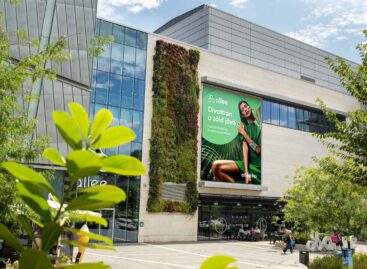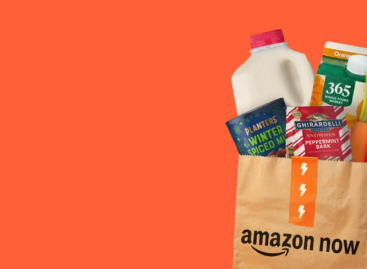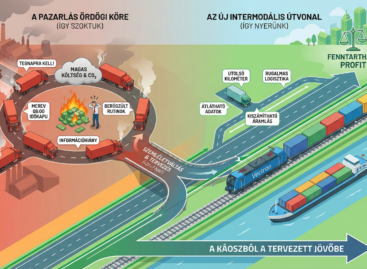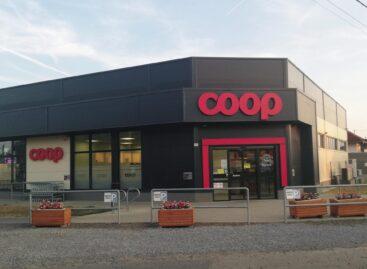Sustainable growth: global corrugated board market could rise to over $206 billion by 2032
The packaging industry is on the verge of a breakthrough: the global corrugated cardboard market could reach $206 billion by 2032, while AI could generate savings that could replace up to 60,000 tons of packaging material annually. The explosion of e-commerce, increasing sustainability expectations and the rise of artificial intelligence are redefining the role of packaging – corrugated cardboard is becoming a future-proof, environmentally and economically key raw material.
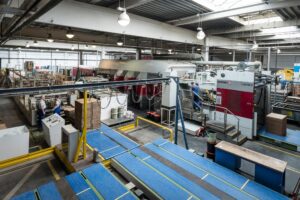 According to the latest industry forecasts, the global corrugated cardboard packaging market could reach $206.3 billion by 2032, growing at an annual rate of 4.4 percent. The growth is primarily driven by the dynamic development of e-commerce, the appreciation of sustainability and the rise of artificial intelligence (AI) – all of which together are reshaping the packaging industry and positioning corrugated cardboard as one of the most decisive raw materials of the future.
According to the latest industry forecasts, the global corrugated cardboard packaging market could reach $206.3 billion by 2032, growing at an annual rate of 4.4 percent. The growth is primarily driven by the dynamic development of e-commerce, the appreciation of sustainability and the rise of artificial intelligence (AI) – all of which together are reshaping the packaging industry and positioning corrugated cardboard as one of the most decisive raw materials of the future.
The trends are well illustrated by the fact that while the global value of the sector was $136.6 billion in 2023, this could grow by more than 50 percent within nine years. A significant part of the growth will be generated by Asia, where China and India together account for about 40 percent of world production. However, the most dynamic expansion is expected where the rise of online shopping generates new packaging needs.
E-commerce has not only brought new channels, but also new challenges to logistics: safe, aesthetic and environmentally friendly packaging of products has now become an expectation. An online order typically requires 2-3 separate packaging units, so more than 100 billion corrugated cardboard boxes are sold worldwide every year. This is not only a challenge from a logistical but also an environmental perspective – which is why paper-based, fully recyclable corrugated cardboard has come to the fore. Manufacturers are now using technologies that enable the rapid and cost-effective production of high-volume, customized packaging, while the raw materials are made from up to 89 percent recycled fiber.
Artificial intelligence is a prominent feature of technological developments. But not only sizing, but also quality assurance and maintenance are being digitized: AI-driven error detection systems filter out manufacturing errors with up to 99 percent accuracy, and predictive maintenance can reduce unplanned downtime by 50 percent. According to McKinsey, generative artificial intelligence technologies can create $4.4 trillion in value worldwide annually, a growing portion of which is realized in industrial and manufacturing sectors – including the packaging industry.
Consumer and corporate decisions are increasingly driven by environmental considerations. The primary raw material of corrugated cardboard is cellulose, which comes from a renewable source, namely wood. Thanks to this, it completely decomposes in the natural environment within 60 days, while leaving no toxic substances behind. This property is particularly important due to the current climate and waste crisis, as it contributes to reducing packaging waste and minimizing soil pollution. Cellulose-based packaging is therefore not only recyclable, but also compostable – a unique advantage over plastic-based alternatives. According to NielsenIQ data, 73 percent of customers are willing to pay more for a product that comes in environmentally friendly packaging. This trend is also clearly reflected in the fact that in more developed European markets – such as Germany or the Netherlands – the collection rate of corrugated cardboard packaging has already risen to over 95 percent.
The domestic sector is also actively responding to global trends. Zsolt Miklós, CEO of Rondo Hullámkartongyártó Kft. According to its CEO, the market has reached a turning point:
“Sustainability is no longer just a competitive advantage, but a fundamental requirement that has become essential for every company. Corrugated cardboard offers a solution that meets environmental, logistical and customer needs at the same time. In addition, the use of corrugated cardboard packaging fully implements the circular economy model: the majority of raw materials used in production are recycled paper, and finished products can be recycled and even recycled into the production process for several cycles. The circular model not only aims to minimize waste generation, but also promotes the efficient use of raw materials – corrugated cardboard is therefore not only a sustainable but also an economically rational choice in the packaging technology of the future. Trends and changes in the market show that brands are increasingly consciously choosing packaging materials, taking into account not only costs, but also the impact on the environment.”
Related news
Allee’s operations are exemplary in terms of sustainability at a global level
🎧 Hallgasd a cikket: Lejátszás Szünet Folytatás Leállítás Nyelv: Auto…
Read more >Amazon tests delivery in half hour or less
🎧 Hallgasd a cikket: Lejátszás Szünet Folytatás Leállítás Nyelv: Auto…
Read more >The most expensive mistake in logistics is the “it’s the way we used to do it” mentality
🎧 Hallgasd a cikket: Lejátszás Szünet Folytatás Leállítás Nyelv: Auto…
Read more >Related news
Superbrands celebrated again in 2025
🎧 Hallgasd a cikket: Lejátszás Szünet Folytatás Leállítás Nyelv: Auto…
Read more >László Pekó: “Coop isn’t just a network, it is a way of life – and has been for 30 years”
🎧 Hallgasd a cikket: Lejátszás Szünet Folytatás Leállítás Nyelv: Auto…
Read more >(HU) Karácsonyi tv-reklámok 2025 – indul a közönségdíj szavazás
🎧 Hallgasd a cikket: Lejátszás Szünet Folytatás Leállítás Nyelv: Auto…
Read more >
